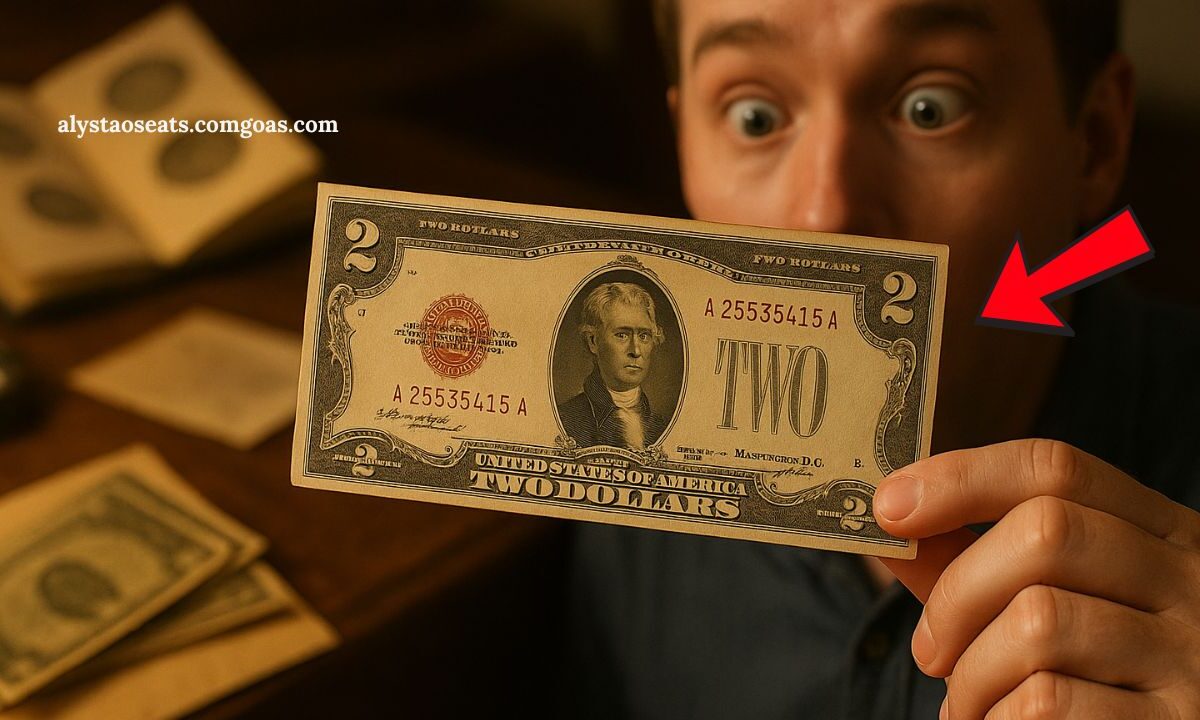Think that dusty $2 bill in your wallet or change jar is just another trivial note? Think again. In 2025, collectors are hunting for rare versions—from 1928 red-seal bills to 1963 star notes and error prints—that can fetch up to $4,500.
Whether you’ve inherited a stash, found one in your daily change, or uncovered a vintage collection, it’s worth learning what features make a bill valuable.
Why Some $2 Bills Are Worth Thousands
Collectors look for specific traits in $2 bills:
- Series year & seal color: 1928 red-seal United States Note is the most prized
- Star notes & serial patterns: Replacement “★” in the serial or low/fancy numbers
- Uncirculated condition and printing errors boost value
These rare versions are far from common, and their scarcity has driven prices to auction records.
Identify Valuable Bills – Spotting Guide
| Feature | What to Look For |
|---|---|
| Series & Seal | 1928 red-seal, 1953/1963 red-seal, 1976 bicentennial |
| Star Notes | “★” in serial number—indicates a replacement bill |
| Serial Patterns | Low serial (like 00000008★), ladders, repeaters, radars |
| Condition | Crisp, uncirculated bills (no folds, bright color) are most valuable |
| Printing Errors | Misaligned serials or stamps can boost value significantly |
Value Chart – $2 Bill Worth in 2025
| Type | Condition | Estimated Value |
|---|---|---|
| 1928 red-seal, uncirculated | Gem UNC | Up to $4,500 |
| 1953/1963 red-seal, uncirculated | Choice UNC | $600 – $2,000 |
| 1976 Federal Reserve, star or error | Circulated/Gem UNC | $300 – $1,200 |
| Star note, low serial, error | Various | $200 – $3,000+ |
| Circulated 1928 red-seal | Fine / Very Fine | $1,500 – $4,500+ |
What Makes These Bills So Rare?
- 1928 red-seal notes were printed in limited quantity during early small-size production
- Star notes replaced damaged bills, leading to small print runs
- Serial fancy numbers and printing errors are constantly sought for their uniqueness
- Uncirculated bills from these series are extremely scarce and command premium prices
Are They Still In Circulation?
Yes! Many of these rare $2 bills are hidden in:
- Old wallets or safety deposit boxes
- Estate finds, antique collections
- Back stock at dealers who missed the rarity
- Everyday change—even today
People usually overlook them—so keep your eyes open.
What to Do if You Find One
- Handle with care—no folding or creasing
- Place in an acid-free protective sleeve to preserve condition
- Photograph the bill clearly, front and back
- Review serial and features using the guide above
- Get an appraisal from a certified currency dealer
- Consider professional grading (e.g. PMG or PCGS Currency) to boost trust and marketability
Where to Sell or Appraise
- Certified currency dealers (look for PNG or ANA membership)
- Major auction houses: Heritage Auctions, Stack’s Bowers
- Online platforms: vetted sellers on eBay, MA-Shops
- Collector forums: Reddit r/papermoney, Paper Money Forum
- Currency expos and shows—in-person expertise and evaluation
If you come across an old $2 bill, don’t dismiss it as common currency. Bills from 1928, 1953, 1963, or those marked with a star or featuring special serials or error traits could be worth anywhere from hundreds to $4,500 or more.
Check your wallet, old collections, or inherited stacks — you might be sitting on a hidden gem. With proper handling, storage, and verification, your humble two-dollar note could turn into a collector’s treasure.
FAQs
Can a regular $2 bill really be worth $4,500?
Yes—1928 red-seal bills in uncirculated condition are among the rarest and most sought-after, with auction prices reaching that figure.
What’s a star note, and why is it valuable?
A star note (★ in the serial) is a replacement for misprints. These are printed in small runs, and collectors pay a premium—especially in good condition or unusual serials.
Is it worth grading my $2 bill?
Definitely. Professional grading authenticates and preserves the bill, increasing its trustworthiness and resale value, especially for high-end auctions.
